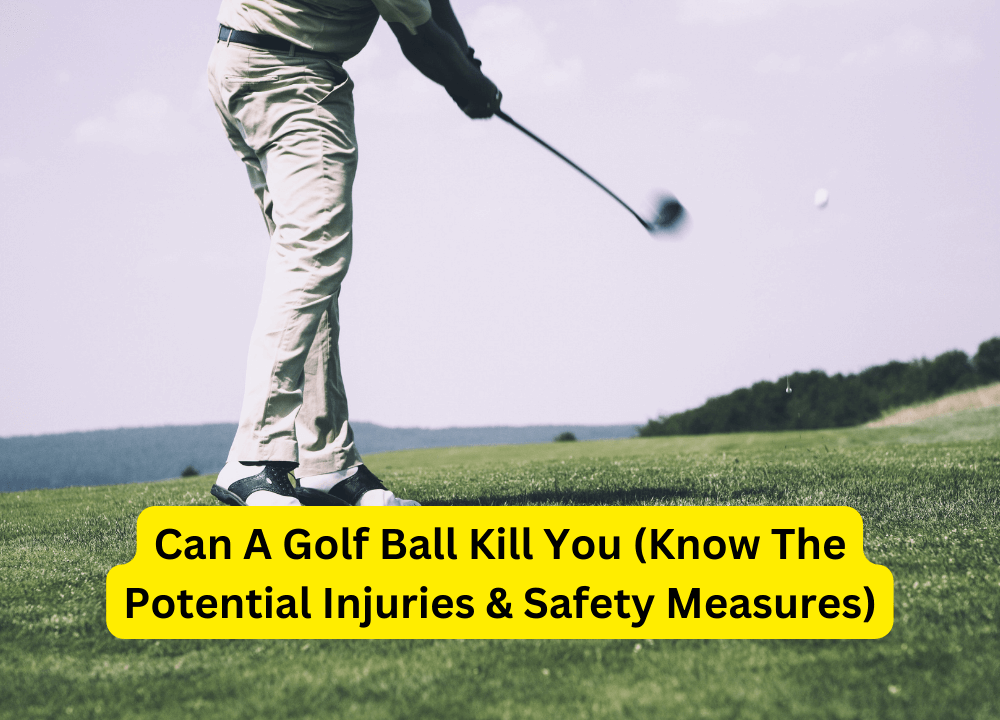
If you’ve ever wondered whether a seemingly harmless golf ball could potentially pose a threat to your safety, you’ve come to the right place.
Golf is usually a relaxing sport that people enjoy. But there’s a hidden danger: the golf ball. Even though it’s small and doesn’t seem dangerous, it can actually cause serious harm.
In this article, we will explore the question, “Can a golf ball kill you?” We will look at the science behind how a golf ball behaves when it is hit and discuss the potential injuries that can occur if a golf ball hits a person.
So, let’s dive in and learn more about the topic to ensure a safe and enjoyable golfing experience for everyone involved.
Can a Golf Ball be a Reason to Kill You?
A golf ball itself cannot be a reason to kill you. A golf ball is an inanimate object that lacks the ability to cause harm intentionally. While accidents can occur during a game of golf, such as being struck by a golf ball, the intention behind the action is not to cause harm.
However, it is essential to prioritize safety and take necessary precautions when participating in any sport or activity. It is never acceptable for someone to intentionally harm or kill another person over a golf ball or any other trivial matter.
The Physics of Golf Ball Impact
When a golf ball is hit, it gains acceleration and velocity, resulting in a force upon impact. Golf balls can reach speeds of up to 160 miles per hour (257 kilometers per hour) when struck by professional golfers. This high velocity, combined with the small size and weight of the ball, contributes to the force it generates upon impact.
The force generated by a fast-moving golf ball can lead to severe injuries, particularly when it strikes vulnerable areas like the head, chest, or other body parts. By examining these physics principles, we can gain insight into the potential risks and take appropriate safety precautions on the golf course.
Potential Injuries from Golf Ball Impacts
Golf ball impacts can result in various potential injuries, some of which can be quite serious. Here are some common injuries that can occur from golf ball impacts:
- Head and Facial Injuries: A direct hit to the head or face can lead to severe injuries, including fractures, concussions, and deep lacerations. The eyes are particularly vulnerable, and even a glancing blow can cause significant damage to vision or result in permanent vision loss.
- Chest and Abdominal Injuries: A powerful golf ball strike to the chest or abdomen can cause broken ribs, internal bleeding, or damage vital organs such as the heart or liver. Life-threatening injuries demand immediate medical attention.
- Bone Fractures: Golf ball impacts on the arms, legs, or other skeletal areas can result in bone fractures. Depending on the severity and location of the fracture, surgery may be required for proper healing.
- Soft Tissue Injuries: Even when a golf ball does not cause a fracture, it can still cause bruising, contusions, or deep tissue damage upon impact. These injuries may result in pain, swelling, and limited mobility.
- Eye Injuries: Golf balls can cause severe eye injuries, including corneal abrasions, retinal detachments, and globe rupture. These injuries can lead to permanent vision impairment or loss if not promptly treated.
- Dental Injuries: Golf ball impacts to the mouth area can result in broken teeth, fractured jawbones, or damage to soft tissues in the oral cavity.
It’s important to note that while these injuries can occur, they are relatively rare compared to the number of golfers who play without incident.
Safety Measures on the Golf Course
To ensure safety on the golf course and minimize the risks associated with golf ball impacts, it is crucial to follow these safety measures:
- Awareness and Communication: Golfers should be aware of their surroundings and communicate with other players and spectators before taking a shot. Clear and effective communication can help prevent accidents and ensure everyone’s safety.
- Stay Behind Protective Barriers: Many golf courses have designated areas, such as fences or netting, to protect spectators from stray balls. Staying behind these barriers and avoiding venturing onto the fairway without permission is important.
- Wear Protective Gear: Non-golfers who are near a golf course should consider wearing protective headgear, such as helmets or hats, to reduce the risk of head injuries in case of an errant ball.
- Stay Alert: Whether playing golf or walking near a golf course, remain vigilant and listen for warnings from golfers or course staff. Pay attention to signage indicating the presence of flying golf balls and act accordingly.
- Respect Personal Space: Keep a safe distance from other golfers and spectators to minimize the risk of being struck by a golf ball. Avoid standing directly in the line of sight or in areas where a ball is likely to land.
- Be Mindful of Practice Areas: Practice areas, such as driving ranges or putting greens, can also pose risks. Stay behind protective nets and be cautious of others practicing their shots.
Remember, safety should always be a priority on the golf course. By following these safety measures and exercising caution, both golfers and non-golfers can enjoy the game while reducing the likelihood of accidents or injuries.
Conclusion:
In summary, the chances of a golf ball causing a fatality are extremely low. However, it is important to know the potential dangers associated with golf ball impacts. By implementing safety measures, such as clear communication, staying behind protective barriers, wearing protective gear, and remaining alert, we can reduce the risks on the golf course. While enjoying the game of golf, it is crucial to prioritize safety to prevent accidents and ensure a pleasant experience for all.
